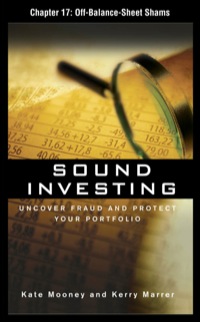Question
Assume: You are a financial adviser and approached by married couple Diane and Leo Alexander. They have limited financial knowledge and are seeking your advice
Assume: You are a financial adviser and approached by married couple Diane and Leo Alexander. They have limited financial knowledge and are seeking your advice about their current financial status. The following information is an extract of data you gathered as part of fact-finding during an initial client consultation for this couple: The Alexander couple currently rents an apartment at Elizabeth Street in Melbourne. They intend to buy a house in the future. They are looking into saving money for margin money for a home loan. The couple has informed you of investing part of saving in the managed fund (equities) and Afterpay Ltd Share (ASX: APT) in the name of Leo. They intend to use this as margin money for the purchase of the house. The Alexander couple has informed you that Savings from their family income will be invested into the Leos Managed Fund (equities) at the end of each financial year. Initially, Diane wanted to invest the savings directly into equities instead of a managed fund. The couple intends to pay back their credit card debt before the financial year ending June 30th, 2021. This debt they accrued during their search for a job. The family do not have any private health insurance. Assume that both Leo and Diane have minimum employer superannuation contributions paid in addition to their salary and they do not salary sacrifice into their superannuation. Diane and Leo have limited financial knowledge and are seeking your advice about their current financial status. Leo and Diane have returned just before Covid-19 to Melbourne after living in New Zealand for the past 8 years. Both are 35 years old and have a 2-year old son. They have used part of their savings to fund their living expenses whilst looking for work upon their return. Luckily, Leo who is an advanced practice registered nurse found work in a local hospital and Diane has since found part-time work as a teacher. Assets and Liabilities (as of 30th June 2021) Assets (Ownership) Current valuation Liability (Ownership) Current valuation Home Contents (Joint) $20,000 Credit cards (Joint) Includes the annual interest cost $6,600 Car (Leo) $30,000 Current accounts (Joint) $5,000 Managed Fund- Equity (Leo) $19,000 Afterpay Ltd Share (Leo) 50,000 Car loan (5-year term) (repayment $520 per month) $29,400 Superannuation -Leo $12,000 -Diane $7,000 Page 2 of 6 RMIT Classification: Trusted Annual Budget for the year ended 30th June 2021 Income type (Inflow) Gross Salary- (Leo Alexander) Gross Salary- (Diane Alexander) Managed fund distribution- 4.00% (Leo) Afterpay Ltd- Dividend (Leo) Expenses (outflow) Rent ($500 per week) 27,040 Electricity, Water and Gas 1,312 Telephone 2,160 Pay television and the Internet 744 Insurance home and contents 1,200 Daycare expenses (3 days a week at $48 each day) 7,488 Insurance car 2,520 Credit cards repayment ($550 a month for 12 months) 6,600 Car loans repayment ($8000 a year for a 5-year term) 6,240 Petrol and car maintenance 6,500 Car registration 890 Public transport 2,800 Other expenses Food 14,500 Clothing, haircuts and personal grooming 5,000 Medical and dental 2,500 Entertainment 12,000 Australian Nursing & Midwifery Federation Membership fees (Leo) $645.00 Gifts - Birthdays and Christmas 5,000 Required: A. Calculate Diane and Leo annual after-tax income for the year ended 30th June 2021. Also, explain how Leo and Diane could reduce their tax liability by splitting their income. Show the effect this strategy would have had if they had split income for this current tax year. Please provide a brief explanation of splitting of income (not more than 100 words) as an effective strategy for the couple. B. i) Calculate the solvency ratio, liquidity ratio and savings ratio using the Alexander couples financial information. ii) Explain in everyday terms what these ratios mean, highlight any concerns you have and iii) Suggest one improvement the Alexander couple could make (10 + 10 = 20 marks) Amount ($) 101,500 32,700 760 2,400 Plus $1,028 Imputation Credit Page 3 of 6
Step by Step Solution
There are 3 Steps involved in it
Step: 1

Get Instant Access to Expert-Tailored Solutions
See step-by-step solutions with expert insights and AI powered tools for academic success
Step: 2

Step: 3

Ace Your Homework with AI
Get the answers you need in no time with our AI-driven, step-by-step assistance
Get Started


